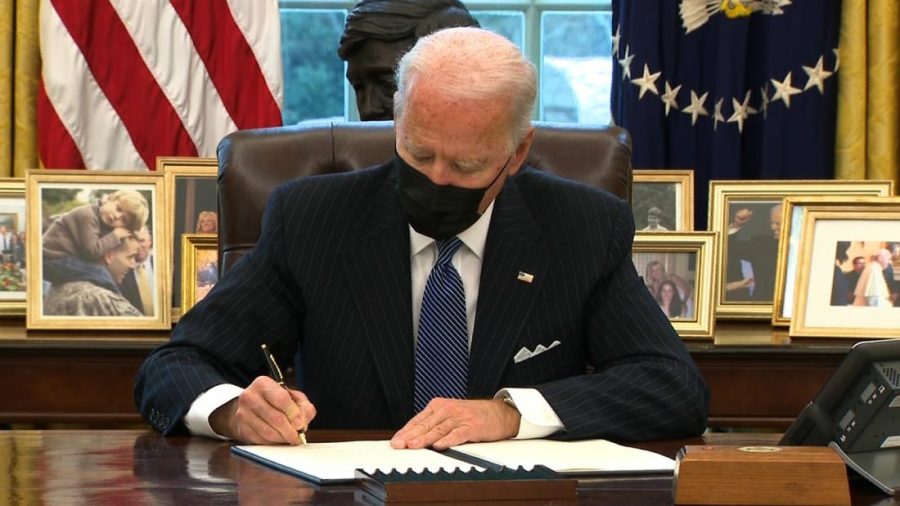Biden Administration gets up and running in the new year
Biden signs the executive order, reversing Trump’s ban on transgenders entering the military.
Along with the beginning of the new year, the new President, Joe Biden, came into office. The majority of Americans voted him in either through mail-in ballots or in-person voting, and the electoral college saw him become the 46th president. But now that his inauguration has passed, and the country is relatively settled, some Americans may be wondering what President Biden has done so far.
He’s done a lot, just like many presidents have done within their first few weeks of being in office.
Many of President Biden’s executive orders have involved reversing the executive orders of the Trump Administration. Most notably, DACA (Deferred Action for Childhood Arrivals), which grants undocumented children protection from deportation, has been reinstated, and transgender people have been allowed back into the military. He has also halted the construction of the Trump Administration’s border wall between the United States and Mexico, as well as reversed the former president’s ban on travelers coming into the US from predominantly Muslim countries.
Perhaps most significant for American citizens presently is the country’s novel plan to combat COVID-19. The Biden Administration has devised a detailed method to slow down the spread of the virus, which includes a mask-wearing mandate and the goal of vaccines being distributed swiftly.
On Tuesday, February 2, President Biden signed three more orders to reverse other immigration policies of the former President Trump, including the “zero tolerance” policy of 2018, which originally allowed the prosecution of people suspected of illegally crossing into the US from Mexico. To do so, President Biden created a Family Reunification Task Force to reunite families who were prosecuted. Counting these three, President Biden has signed twenty-five executive orders since Inauguration Day as of February 2nd.
Recently, Democrats in Congress have been pushing for a COVID relief bill of $1.9 trillion, which would provide the American public with stimulus checks and benefits when passed. The Senate, with its Democratic majority, voted 50-49 on February 2 to accelerate the process towards the bill being passed. However, Republicans are opposed to spending such a large sum on the bill, which means that a bipartisan compromise in Congress is unlikely to conclude with all $1.9 trillion being spent on COVID relief.
Sometime soon, stimulus checks and government aid are expected to be given to the public, though it may take a while. The vaccination process is presumed to speed up as well. Maybe in the near (or distant) future, with the help of new executive orders, lockdowns and quarantines will be matters of the past.


